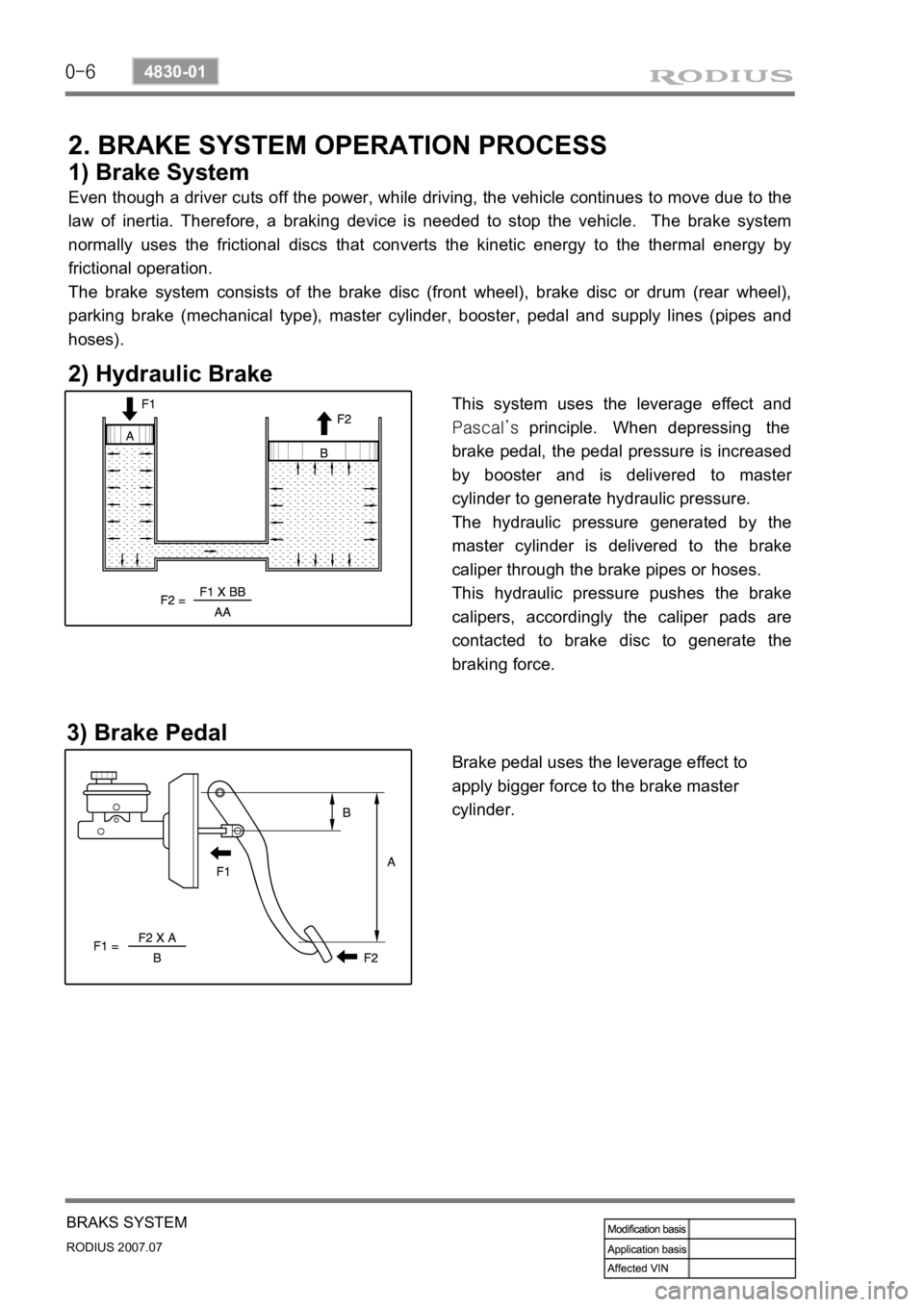0-21
STICS
RODIUS 2007.07
8710-01
6) Parking Brake Warning
The parking brake warning light comes on for approx. 4 seconds (T4) when turning the
ignition key from “OFF” to “ON” position regardless of the vehicle speed and parking
brake switch position.
The warning light comes on when the parking brake switch is turned on while the vehicle
speed is below 10 km/h (V1).
The warning light goes off when turning off the parking brake switch under step 2.
The warning light blinks and the chime buzzer in the ICM box sounds for 2.85 seconds and
stops for 1.5 seconds when the vehicle speed is over 10 km/h (V1) for more than 2 seconds
while the parking brake switch is turned on.
The warning light goes off and the chime buzzer stops when turning off the parking brake
switch under step 4.
The warning light comes on and the chime buzzer stops when the vehicle speed goes down
below 7 km/h (V2) under step 4.
This function is not available when the ignition key is turned to “OFF” position. 1.
2.
3.
4.
5.
6.
7.
0-6
RODIUS 2007.07
4830-01
BRAKS SYSTEM
2. BRAKE SYSTEM OPERATION PROCESS
1) Brake System
Even though a driver cuts off the power, while driving, the vehicle continues to move due to the
law of inertia. Therefore, a braking device is needed to stop the vehicle. The brake system
normally uses the frictional discs that converts the kinetic energy to the thermal energy by
frictional operation.
The brake system consists of the brake disc (front wheel), brake disc or drum (rear wheel),
parking brake (mechanical type), master cylinder, booster, pedal and supply lines (pipes and
hoses).
2) Hydraulic Brake
This system uses the leverage effect and
Pascal’s principle. When depressing the
brake pedal, the pedal pressure is increased
by booster and is delivered to maste
r
cylinder to generate hydraulic pressure.
The hydraulic pressure generated by the
master cylinder is delivered to the brake
caliper through the brake pipes or hoses.
This hydraulic pressure pushes the brake
calipers, accordingly the caliper pads are
contacted to brake disc to generate the
braking force.
3) Brake Pedal
Brake pedal uses the leverage effect to
apply bigger force to the brake master
cylinder.

